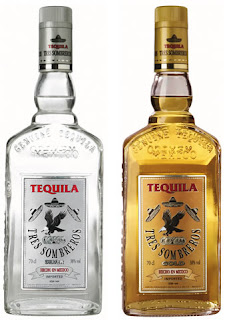"The Flying Car" (no kidding) from VOA
-
*This is the VOA Special English Technology Report.You could fill the sky
with all the ideas people have had for flying cars...
Sunday, April 15, 2012
"Tequila" by Rosa Perez Hernandez
Tequila is the national drink of excellence, and even though it wasn’t known as a distilled product until the XVIII century, there was an important history of its intake among the prehispanic people who planted the agave, associating it to healing and religious properties.
Even though the fertile soil, climate and altitude of Mexico are proper for the production of different agave types, tequila is only obtained from the Agave Tequilana Weber variety. This plant requires extreme care, reaching its initial maturity stage at eight years of age, which can even be at twelve or sixteen years in the case of plants destined for the production of aged tequila.
This plant has special characteristics that gives it beauty and makes it endure, its blue or green color, is due to waxes for humidity conservation.
The preparation process is a whole ritual that requires experience and specialization. it’s important to know the plants for their maturity stage and to have the skill for precise cuts, which will strip the plant from its leaves and thoms, leaving only the heart, called pina. The agave heart is cut in half and cooked in stainless steel containers. this procedure is of great complexity and importance, submitted to an approximate pressure of 1.2 Kg/cm2 for many hours, up to eighteen hours before it’s taken out of the containers.
It’s shredded after cooking for obtaining the agave’s fiber. Its juice will be extracted later by directly injecting water at a high pressure for greater yield of the plant’s juice. This juice is conducted to vats adding yeast for accelerating the fermentation process, produced in a special room where it’s kept for approximately three days.
Once the agave’s sugars are fermented, they will be transformed into ethyl alcohol during the distillation process, obtaining a 55% alcohol volume in the first stage. This will be stored into the barrels that will ultimately define the type of tequila obtained; white, rested or aged. Also depending on this selection is if the obtained juice is or isn’t mixed with other sugars or colors. When the time programmed for the stored tequila is reached, it’s sent through a process of dissolution with distilled water, reducing the alcohol volume to 38%.
It’s important to mention there are hygiene norms determining the time tequila should rest barrels, the barrel’s wood and the alcohol volume each must contain, Labeling, packaging and consumer information is also regulated.
No other place in the world can produce tequila, because it can only be made from the plant produced in Mexico, Agave Tequilana Waber, that grows in the States of Jalisco, Nayarit, Michoacan, Guanajuato and Tamaulipas, with a process abiding by all the official regulations.
For all of this reasons, tequila is the national beverage, besides its production ritual, it represents festivity, friendship, earth and the field’s value, characterizing Mexican Culture.
Subscribe to:
Post Comments (Atom)


















No comments:
Post a Comment